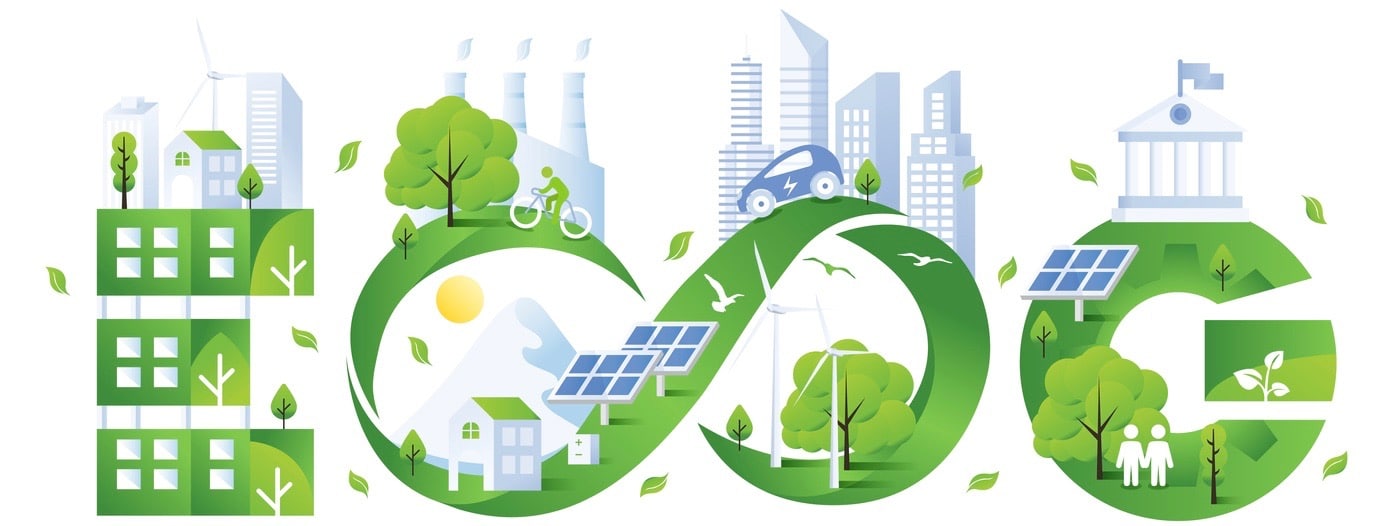Environmentally conscious consumerism is the driving force behind branding choices for many major businesses—even those that are not directly working within a sector that’s related to ecological issues and ethical considerations.
Because of this, managing a company’s reputation through actively conscientious practices is wise. Here’s an overview of why this matters, and what businesses are doing to pursue this.

Image Source: Pexels
How Consumers View Eco-Friendly Brands
Consumer perception is a critical driving force that can either propel or challenge a company’s success. When it comes to eco-friendly practices, here’s how they typically resonate with consumers:
Authenticity is Key
Consumers are increasingly savvy about greenwashing, where companies claim more eco-friendly practices than they actually implement. One study found that 42 percent of these claims are made without being supported by any clear evidence—while 68 percent of execs had copped to exaggerating the green credentials of their companies. This means that authenticity in your environmental claims can build trust and loyalty
Value Alignment
Many consumers, especially Millennials and Gen Z, prefer brands whose values align with their own personal beliefs about sustainability and environmental responsibility. This match can be a decisive factor in their purchasing decisions—with one survey finding that 75 percent of Gen Z consumers put sustainability above brand names when picking what to buy.
Transparency Leads to Trust
Open communication about your brand’s efforts and challenges in sustainability fosters a deeper connection. Consumers appreciate transparency as it allows them to see the genuine journey of a brand towards better practices.
For instance, offering eco friendly shipping as an option for delivering orders placed online, and putting the emphasis on this in promotional materials, will help retailers win over the next generation of shoppers.
The Media’s Role in Eco-Friendly Branding
Media coverage shapes how the eco-friendly initiatives of brands are perceived and valued by the public. For instance:
- Stories that highlight specific actions your brand has taken to improve sustainability can capture media attention more effectively than generic statements. Success stories or innovative practices should be front and center.
- Collaborating with influencers who are known for their commitment to environmental issues can amplify your message. They bring credibility and a dedicated audience that is already tuned into eco-friendly messages.
- Ensuring that eco-friendly initiatives are consistently featured across all media platforms, from traditional press to social media, establishes a strong, coherent brand image that consumers can easily recognize and trust.
Case Studies in Green Branding
Lots of established brands have earned positive media coverage and acclaim from consumers alike thanks to their eco-friendly practices. Here are a few noteworthy examples:
Patagonia
A pioneer in ethical business practices, Patagonia’s commitment to environmental sustainability is deeply embedded in its brand identity. The company donates 1% of its sales to pro-planet pursuits—exceeding $230 million to date, and uses recycled materials in many of its products.
IKEA
Known for its flat-pack furniture, IKEA has made significant strides in sustainability, such as sourcing close to 100% of its cotton from farms meeting strict environmental standards and aiming to use only renewable or recycled materials by 2030 as part of its circular agenda.
Tesla
Although primarily recognized for its electric cars, Tesla also promotes sustainable energy solutions broadly. Its approach includes solar panels and battery systems that are reshaping how energy is stored and utilized, enhancing Tesla’s brand as a leader in technological innovation for sustainability. Owning one is perceived as a unique experience, thus Tesla novated leasings have also popped up to help make it more affordable. While its PR strategy may be flawed in other ways, the fundamentals at play here are worth recognizing.
Lush Cosmetics
Renowned for its fresh, handmade cosmetics, Lush takes an aggressive stance against packaging, often selling products ‘naked’ or without any packaging at all. This not only reduces waste but also emphasizes their commitment to sustainability, resonating well with eco-conscious consumers.
Seventh Generation
A leader in green cleaning and personal care products, this company is transparent about the ingredients it uses and the impacts they have on health and the environment. Additionally, Seventh Generation advocates for chemical reform laws and more stringent regulations to promote environmental safety.
Ben & Jerry’s
Aside from being famous for quirky ice cream flavors, Ben & Jerry’s is deeply committed to social and environmental causes. The company uses fair trade certified ingredients and has implemented sustainable practices in its operations to reduce carbon emissions effectively.
Final Thoughts
There’s no excuse for businesses of any size to ignore the concerns about the environment that the majority of modern consumers share. In addition to being ethically sensible, this is a solid commercial strategy for brand success – so don’t sleep on this issue if you value the long term viability of your organization.








